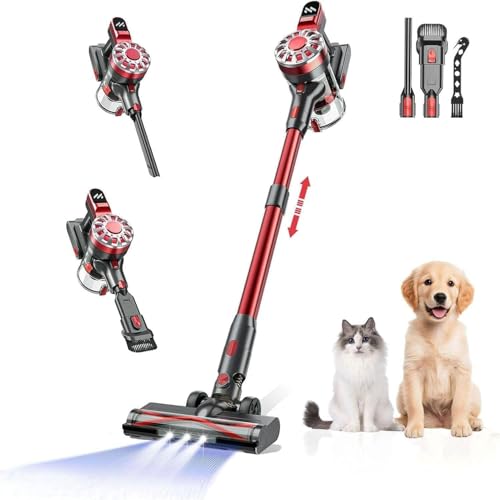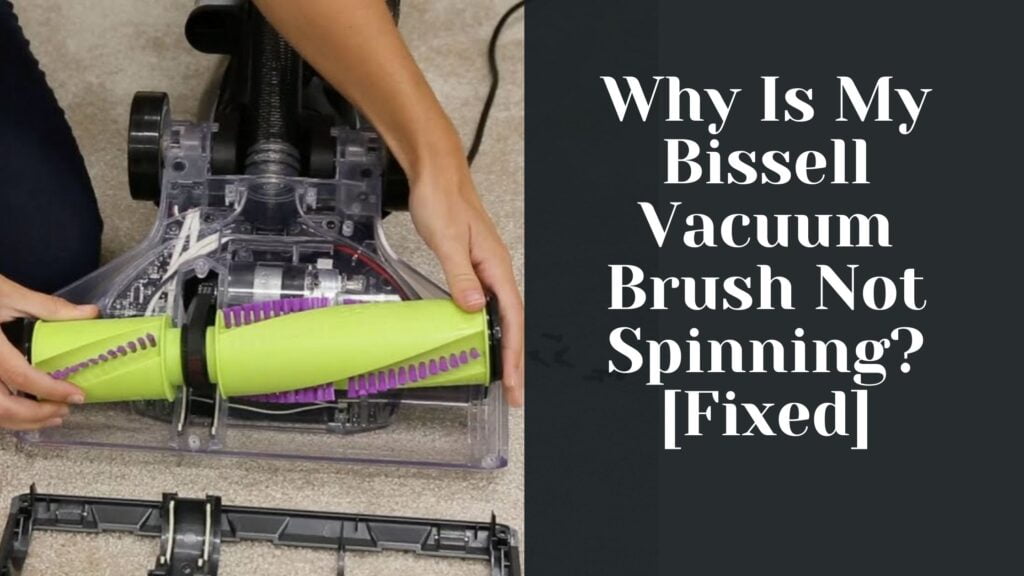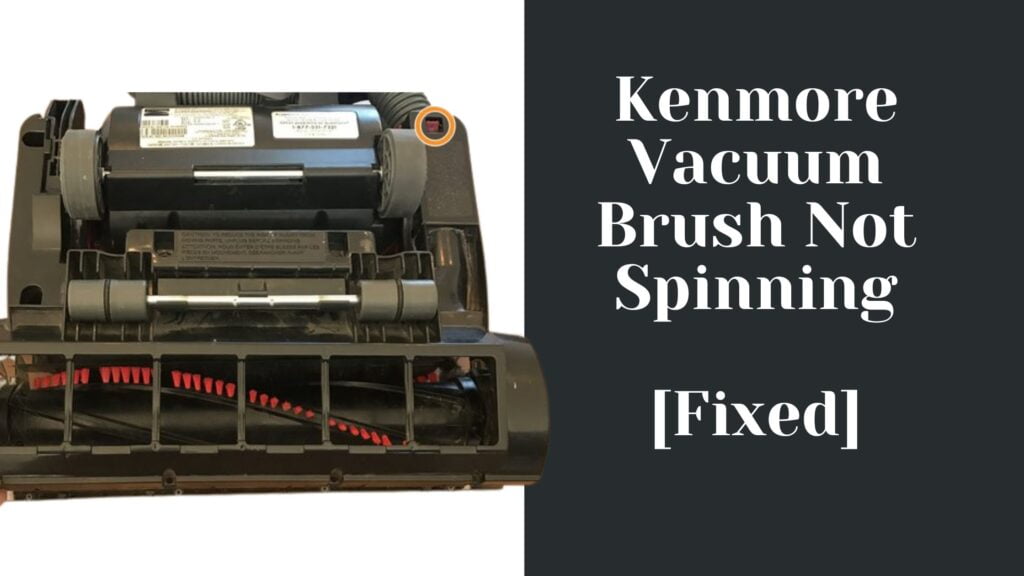If you’ve ever found your Bissell vacuum difficult to push on carpet, you’re not alone. Many homeowners have faced this common issue, and it’s often due to a variety of reasons ranging from the type of carpet to the settings on your vacuum cleaner. But don’t worry; we’re here to help you get back on track with your cleaning routine.
The key lies in understanding how your Bissell vacuum works and what factors may be making it hard to move across your carpet. Is it a new plush carpet? Or perhaps it’s an old model that hasn’t been serviced in a while? Regardless of the situation, there are steps you can take to make sure your cleaning sessions become less of a workout.
By addressing these issues head-on, you’ll find that pushing your vacuum doesn’t have to be as strenuous as it sometimes might seem. So let’s dive into exploring why this problem occurs and how you can easily solve it for smooth sailing (or rather, smooth vacuuming) ahead!
Understanding Why Your Bissell Vacuum is Hard to Push
Has it ever crossed your mind why your Bissell vacuum is a pain to push around on the carpet? You’re not alone. Many users have reported similar issues, and there are several reasons behind this common problem.
One of the most prevalent causes is a poorly adjusted height setting. Yes, you heard right! If your vacuum’s height adjustment isn’t set correctly for your carpet type, it can make maneuvering the machine more difficult than it should be.
Another frequent culprit could be problems with the belt or brush roll. The belt in your Bissell vacuum transfers power from the motor to the brush roll, helping it spin and pick up debris from your carpets. If either of these parts is worn out or broken, pushing your vacuum across carpets can become an uphill battle!
Here’s another thing: A dirty filter may also contribute to this issue. When filters get clogged with dust and dirt particles over time, they restrict airflow causing a decrease in suction power which makes pushing hard.
Let’s not forget about those pesky area rugs! Thick or high pile area rugs can also prove challenging for some vacuums. They tend to ‘grab’ onto vacuums making them harder to push.
Finally, consider the effect of worn-out wheels or bearings on mobility. Over time and use, these parts can wear down – resulting in increased resistance when you’re trying to move around with your machine.
Now that we’ve unraveled these potential reasons let’s remember that understanding why your Bissell vacuum is tough to push on carpets might require a bit of detective work but will ultimately help you keep up with maintaining clean flooring surfaces without breaking a sweat!
The Design of Bissell Vacuums
Bissell has certainly made a name for itself in the vacuum industry. It’s no surprise considering their vacuums’ design is both ergonomic and innovative. Their designs focus on ease of use, efficiency, and durability. Let’s delve deeper into what makes Bissell vacuums stand out.
The first thing you’ll notice about a Bissell vacuum cleaner is its robust construction. Most models feature heavy-duty plastic bodies that can withstand everyday wear and tear like a champ. They’re built to last, so you don’t have to worry about replacing your appliance every couple of years.
Next up, let’s talk maneuverability. Navigating through furniture or making sharp turns isn’t always easy with bulky vacuum cleaners. But Bissell has this covered – their vacuums often come with swivel steering and lightweight designs that make them easy to push around, even on carpeted floors.
Bissell also prioritizes versatility in their designs. Many of their models are 2-in-1 appliances – they function as an upright vacuum but can convert into a handheld or canister model for above-ground cleaning tasks such as stairs or upholstery.
Another noteworthy aspect is the filtration system incorporated in Bissell vacuums. They typically employ multi-level filtration systems that effectively trap small particles and allergens inside the dust bin, contributing significantly towards maintaining your indoor air quality.
Finally, most Bissell vacuums are bagless which adds to user convenience. You won’t need to buy replacement bags regularly – instead,you’ll simply empty the dust bin when needed.
Overall, these features ensure that when you invest in a Bissell vacuum cleaner you’re not just buying an appliance but rather a practical solution tailored for modern homes like yours.
Impact of Carpet Types on Vacuum Performance
Pushing your Bissell vacuum across the carpet and noticing it’s a bit harder than usual? You’re not alone. Many homeowners share this struggle, and often, the type of carpet you’ve got at home plays a significant role in this dilemma.
Different carpet types have varying pile lengths and densities that can affect how smoothly your vacuum glides over them. For instance, high-pile carpets like shags or friezes are notoriously challenging to push vacuums over due to their long, loose fibers. These fibers can entangle with the vacuum’s brush roll, making it hard for you to maneuver.
In contrast, low-pile carpets such as berbers offer less resistance because of their short and tightly woven fibers. You’ll find your Bissell vacuum gliding effortlessly on these surfaces most times.
To make matters trickier, there are also multi-level loop carpets featuring both high and low piles in one design! Wrestling with such a surface may seem like an uphill battle unless you adjust your vacuum’s height settings accordingly.
Next up is the plush or cut-pile carpet – another popular choice for homes due to its soft texture underfoot; however, its dense fiber construction can be quite resistant to some vacuums.
Here’s a quick rundown:
- High-Pile Carpets: Shag, Frieze
- Low-Pile Carpets: Berber
- Multi-Level Loop Carpet
- Cut-Pile Carpet: Plush
Remember that understanding how different carpet types impact your vacuum performance isn’t just about ease of use – it’s also crucial for maintaining the longevity of both your machine and floors.
Common Issues with Bissell Vacuums on Carpets
Let’s dive into the world of vacuuming, where sometimes, things don’t go as smoothly as we’d like. You might love your Bissell vacuum for its power and efficiency, but it can occasionally be a challenge to push on carpets.
There are several reasons why your trusty cleaner is giving you a tough time. One common issue is that the height adjustment setting may not be correctly configured for carpet cleaning. If it’s set too low, pushing becomes more difficult because of the increased friction between the vacuum and carpet fibers. It’s like trying to drive a car in first gear at highway speeds—just doesn’t work!
Another likely culprit could be a worn-out or damaged belt. This small component plays an important role in transferring power from the motor to the brush roll, which agitates dirt and debris out of your carpets. Over time or through heavy usage, belts wear down and lose their effectiveness.
Don’t forget about clogs! They’re sneakily disruptive – lurking in hoses, filters or even the brush roll itself – hindering performance by blocking airflow and reducing suction power. Believe us when we say there’s nothing more frustrating than dealing with a stubborn blockage mid-clean.
Lastly, let’s talk dirty filters – literally! If they’re not cleaned regularly or replaced when needed, they can reduce suction power dramatically making it harder to push your vacuum over carpets.
So if you find yourself wrestling with your Bissell every time you want clean carpets:
- Check your height adjustment settings
- Inspect belts for signs of wear
- Clear any potential clogs
- Ensure filters are clean
A little troubleshooting goes a long way towards restoring that smooth glide you’ve been missing! Remember: regular maintenance keeps frustrations at bay while extending the lifespan of your trusted sidekick – your Bissell vacuum.
Solutions for a Difficult-to-Push Bissell Vacuum
Sometimes, your once easy-to-push Bissell vacuum can become a chore to maneuver. Whether it’s plowing through low-pile carpet or struggling on high pile shag, several factors might be at play here. Let’s dive into some solutions that may help ease your vacuuming woes.
Firstly, you’ll want to check the height adjustment setting on your vacuum. If it’s set too low, the brush roll could be digging into the carpet making it hard to push. Adjusting this setting to match your carpet type can dramatically improve maneuverability.
Next up is the condition of the brush roll itself. Over time, hair and debris can wrap around the brush roll, hindering its rotation and causing resistance when pushing across carpets. Regularly cleaning or replacing the brush roll ensures optimum performance.
Your vacuum’s belt condition also plays a significant role in how easily it glides over carpets. A worn-out belt doesn’t efficiently drive the brush roll which results in difficulty pushing. Checking and replacing belts as needed will help maintain easy movement.
Additionally,
- Examine if there are blockages in hoses or attachments; these can create suction problems.
- Inspect wheels for damage or obstructions; these could impact smoothness of motion.
- Check if bag or dust cup is full; an overloaded vacuum often becomes more difficult to push.
But remember – while DIY fixes work well for minor issues, if your Bissell vacuum still puts up a fight after trying all these tips, don’t hesitate to contact professional services for further assistance!
Maintaining Your Bissell Vacuum for Optimal Performance
You’ve invested in a Bissell vacuum and it’s become your go-to tool for maintaining clean and pristine carpets. But lately, you’ve noticed that it’s becoming hard to push on the carpet. Don’t worry! There are simple ways to maintain your Bissell vacuum for optimal performance.
Firstly, regular cleaning is essential. Dirt, hair, and debris build-up can severely affect your vacuum’s ability to glide smoothly across the carpet. This means you’ll need to check and clean the brush roll regularly. If you’re noticing excessive resistance when pushing your vacuum, there might be too much hair wound around the brush roller. Simply remove it and carefully cut away any trapped hair with scissors.
Secondly, adjusting the height setting of your vacuum can make all the difference in its performance on different surfaces. If it’s set too low, it might be too difficult to push on certain carpets or rugs. Play around with these settings until you find what works best for each surface in your home.
Next up is filter maintenance – an often overlooked but crucial aspect of keeping your Bissell running at peak efficiency. It’s recommended that you replace them every 3-6 months depending on usage levels.
Lastly, let’s not forget about belt maintenance. A loose or worn-out belt could lead to a sluggish performance from your vacuum cleaner.
- Regular Cleaning
- Check & Clean Brush Roll
- Adjust Height Settings
- Filter Maintenance
- Replace Every 3-6 Months Depending On Use
- Belt Maintenance
Remember, preventative care is often far less costly than repairs down the line! By following these steps not only will you extend the lifespan of your vacuum cleaner but also improve its overall functionality.
Expert Tips: Using Your Bissell Vacuum on Different Carpet Types
Let’s dive right in with the toughest carpet type, high pile carpets. They’re soft and luxurious underfoot but can be a nightmare to maintain. If you’re finding your Bissell vacuum difficult to push on this type of carpet, we’ve got a few solutions up our sleeve. Adjusting the height setting to a higher position will often do the trick, making it easier for your vacuum to glide over deep pile without getting stuck.
When it comes to low pile or Berber carpets, it’s another story altogether. These types of rugs are tightly woven and dense, which means they hold onto dirt like there’s no tomorrow! To make sure you’re really picking up all that hidden grime, lower the height setting on your Bissell vacuum. This brings the brush closer to the ground level and allows for more effective cleaning.
Now what about those medium-pile carpets? Well here’s where things get interesting! For these middle-of-the-road options, starting with a mid-range height setting is typically best. You might need some trial and error before finding the perfect balance between ease of movement and effective cleaning.
But remember – different vacuums have different features! Some models offer automatic height adjustment which can be a real game changer when dealing with multiple carpet types in one home.
Lastly – don’t forget about suction control! It’s an often overlooked feature but can significantly impact how hard or easy it is for your vacuum to move across different surfaces. A lower suction setting can ease movement on high-pile carpets whereas increasing suction power could help pick up stubborn dust particles from low-pile rugs.
- High-Pile Carpets : Adjust height setting higher
- Low-Pile Carpets : Lower height settings
- Medium Pile Carpets : Start at mid-range then adjust based on effectiveness
- Suction Control: Lower for High-Pile and increase for Low-Pile
Remember these tips next time you break out your trusty Bissell – they’ll help ensure that no matter what type of carpet you’re dealing with, you’ll find it easier than ever before!
Conclusion: Ensuring Smooth Operation of Your Bissell Vacuum
Keeping your Bissell vacuum running smoothly on carpet doesn’t have to be a chore. It’s all about understanding the mechanics and knowing the right steps to take. Here are some final tips to ensure smooth operation.
Regularly check your vacuum’s brush roll. If it’s clogged with debris, it can make pushing the vacuum harder than it should be. Cleaning or replacing this part when needed will help maintain optimal performance.
Pay attention to your vacuum’s height setting. When set too low, you might find it hard to push on carpets. Adjusting this according to the pile height of your carpet can greatly improve maneuverability.
Don’t forget about regular maintenance either! Keep up with routine cleaning of filters and dust bins, as these can impact the suction power if left unchecked.
Lastly, don’t overlook professional servicing for complex issues. Sometimes, problems may go beyond what you can handle at home. In those instances, reach out to a certified technician who specializes in Bissell vacuums for assistance.
Just remember:
- Regularly inspect and clean/replace your brush roll
- Adjust height settings based on carpet pile
- Complete routine cleaning of filters and dust bins
- Seek professional servicing when necessary
By following these guidelines, you’ll keep that Bissell vacuum gliding smoothly across any carpet surface! And remember – taking care of your machine will not only make cleaning easier but also extend its lifespan.




















